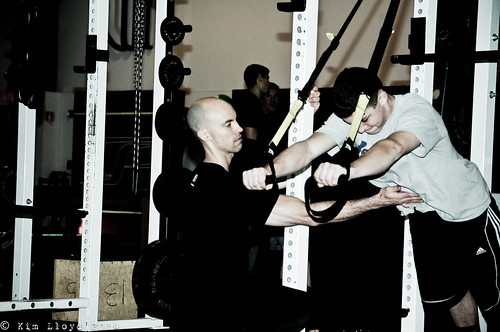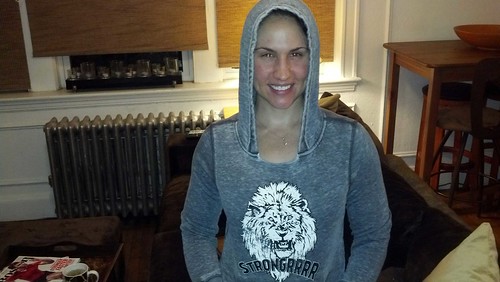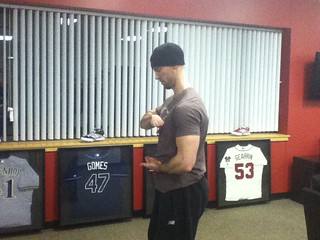I’m sitting here in my apartment – in Boston – and it’s currently 17 degrees outside. Two days ago I was sitting on the beach reading a book in 80 degree weather in the Dominican Republic.
Lisa just left for work, and right before she shut the door we both kinda gave each other a bemused look as if to say “well, it was cool while it lasted.”
We kissed, said “I love you,” and in that instance……..we were both propelled back into reality.
I don’t think I have to tell everyone that our vacation was nothing short of amazing. In fact, for those who kept up with the blog last week in my “absence,” you know we had an amazing time, because 1) I told you (I did have access to some wifi, and Lisa was understanding enough to let me disappear for a few minutes here and there to check in and update the blog. It didn’t hurt I was able to bribe her with an endless array of cocktails), and 2) we took – and shared – and bunch of pictures.
Here we are at the Monkey Jungle/Zip Lining Adventure
I’ll refrain from the obvious “getting the monkey off my back” joke here.
There was plenty of pool and beach time
And of course, cocktails
Admittedly, I’m not a big drinker – I honestly can’t stand the taste of alcohol – but hey: it was vacation, why the hell not.
Here’s me trying one of Lisa’s drinks
Annnnnnnnd, here’s my reaction
But as much as we enjoyed the scenery, weather, and food. OMG the food! I’d say what made the trip exceptional was the people. I know I mentioned this last week during one of my covert Lisa-has-a-cocktail-and-is-in-her-happy-place-so-I’m-going-to-snake-away-and-get-on-the-internet operations, but words can’t describe how friendly, appreciative, kind, and gracious the people of the DR were.
Throughout our week-long stay, both Lisa and I made note of how often we (as in she and I, as well as society) take things for granted, and how “we” allow ourselves to be inundated with our quote on quote 1st World or “luxury” problems.
The resorts and beaches are beautiful. But I don’t think I have to sugar-coat anything or pull the wool over everyone’s eyes and not note that there’s a resounding amount of poverty in that area.
It’s hard not to take notice when it’s right there in front of you during the ride from the airport to the resort(s). The windowless, dilapidated, houses, the lack of infrastructure, the kids running around with no shoes. It’s all right there. Unflinching.
But even as Lisa and I noticed it and couldn’t possibly understand what it’s like to not have access to a mattress, clean tap water, or god-for-bid, a consistent wifi connection, the people were, almost resoundingly so…..happy!
Granted our perspective(s) may have been a bit skewed since we were on the resort 95% of the time, but it was uncanny how upbeat and enjoyable the locals were. Everyone smiled. Everyone, when asked how they were, responded with “excelente!”
Even the vendors on the beach – who, if you read the reviews on TripAdvisor, were the universal sole negative factor of the resort and were the worst things since a Kardashian wedding – were pretty freaking cool.
Here they were walking around the beach in god-awful hot weather, lugging around and trying to sell their necklaces, shirts, and carved goods to a bunch of rich, entitled tourists, and even they were smiling and seemingly having a good time.
I’m sure wearing my RedSox hat helped me to some degree – David Ortiz is a god down there – but even after politely saying “no thanks,” it wasn’t uncommon to end up engaged in some small talk about the RedSox or baseball in general, and it was uncanny to observe how upbeat and happy they all were.
This isn’t to say that there aren’t some MAJOR societal “red flags” and issues going down in the DR with regards to equality and basic human rights being met, but all things considered, from what I observed, they’re pretty happy.
And it comes back to this whole “luxury problems” comment I made earlier.
In recovery or 12-Step language, so long as you have your basic needs met – food, water, shelter, access to healthcare – then, and only then, do you really have to worry about addressing any “luxury” or 1st World problems you may have.
But be honest……..
How many problems in your life are ACTUAL problems?
Your iPhone breaks down. Sure it sucks, and it’s a minor inconvenience, but is it the end of the world? Will the Mayan Apocalypse begin if you can’t play Candy Crush for a day or two?
Probably not.
I can’t help but see some of these same parallels in the fitness world.
Many of our “fitness woes” can be considered luxury problems.
I’m taking some liberties and making some gross generalizations, but:
1. Men tend to be worried and place a lot of credence in having a six pack or biceps.
2. Women tend to get a in a tizzy if they don’t fit into a particular pant size or don’t weigh 110 lbs.
Neither of the above scenarios really say anything about one’s actual health or well-being. It’s just, sadly, what society tells us is what’s “valuable.”
And it’s bullshit.
Worrying about weight, clothing size, six packs, whether or not your biceps look good in your latest selfie pic, or crushing your next WOD are all the fitness equivalent of LUXURY PROBLEMS.
Stephen King tells all aspiring writers to read The Elements of Style. I’ve read it. Most of it is Klingon to me. But rule 17 in the chapter titled “Principles of Composition” is “Omit needless words.”
I’m still working on that rule (poop), but when you think about it, it’s a rule that parlays very well into other realms in lifeOh, too. Especially the fitness realm.
In the same vain I’d like to tell everyone to “omit needless exercises.”
Squat, hinge, push, pull, carry, single leg work, and “some” direct core training is all you need.
Oh, and it probably wouldn’t hurt you to focus on getting STRONG. Focus on bar speed. Focus on QUALITY reps. Eat your fucking vegetables! <—— Just tossing that last one in there.
Much like the example made earlier with basic needs, these are your basic fitness needs.
I wholeheartedly believe that if people placed more credence on these things, tried, to the best of their ability, to include all the movements in every workout, placed a premium on getting stronger, and made more of an effort to focus on performance based goals, they wouldn’t be worrying about pant sizes, or six packs, or what the scale says.
If guys spent more time working towards deadlifting 2x their bodyweight than performing 14 different bicep exercises in one training session, I’m willing to bet they’d actually have decent sized arms anyways.
If women spent more time working towards being able to perform at least one, strict, bodyweight chin-up than fiddling with those silly pink dumbbells to “tone” their arms, I’m willing to bet they’d be rocking that strapless dress sooner rather than later.
Quit focusing on the luxury problems. Focus on the REAL problems. The big rocks. That’s the path to (fitness) happiness.







